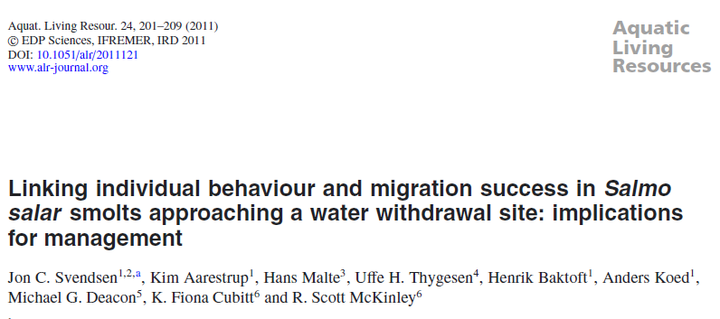Linking individual behaviour and migration success in Salmo salar smolts approaching a water withdrawal site: implications for management.

Abstract
Seaward migration of immature salmonids (smolts) may be associated with severe mortality in anthropogenically altered channels. Few studies however, have identified distinct behaviours that lead to exposure to adverse habitats or even unsuccessful migration. This study used high resolution telemetry to map migration routes of Atlantic salmon (Salmo salar) smolts approaching a water withdrawal zone associated with an aquaculture facility in a lowland river. Individual smolts were tagged with an acoustic transmitter and released upstream of the water withdrawal zone. A trap was installed downstream of the water withdrawal zone. The trap captured all smolts that passed the water withdrawal zone. The tracking results confirmed previous studies on Pacific salmon showing that Atlantic salmon smolts may perform milling behaviours (i.e. upstream excursions and circular swimming behaviour) in anthropogenically altered channels. Non-milling and milling smolts were compared. Smolts performing milling behaviours covered a larger area (m2) and experienced an increased probability of entering the water withdrawal zone, considered an adverse habitat. Finally, smolts were identified as either passing (67%) or non-passing (33%) the water withdrawal zone based on the recapture data from the trap. In total, 20% of the non-passing smolts entered the aquaculture facility. Several behavioural traits differed between the remaining (80%) non-passing smolts and the passing smolts. In particular, time spent near the water withdrawal zone correlated negatively with the probability of passage. These links between individual behaviours and exposure to adverse habitats and passage probability may be applied to improve management of salmonid populations.